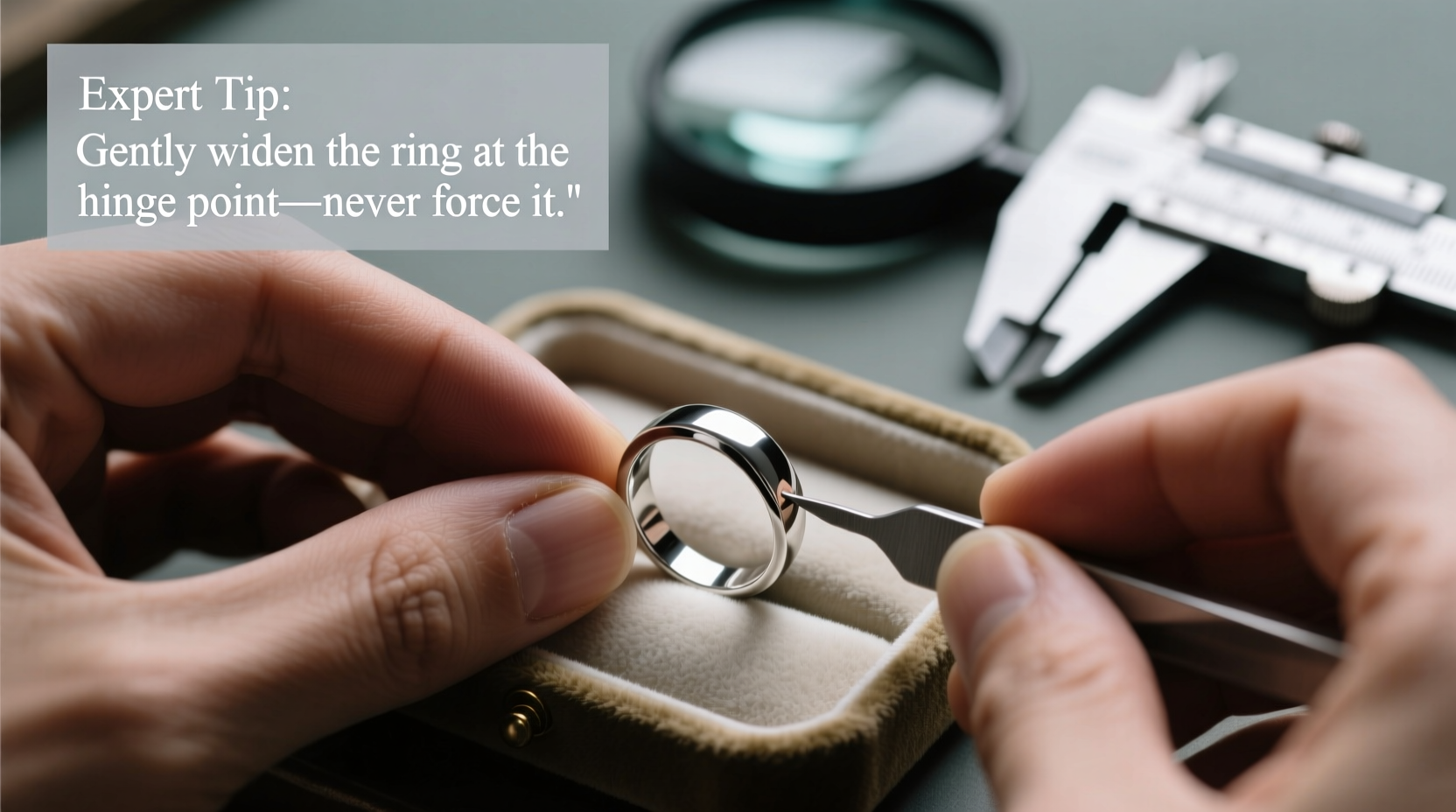Open-ended rings—also known as adjustable or tension rings—are prized for their versatility and ease of wear. Unlike traditional closed bands, they can be gently reshaped to fit various finger sizes without permanent alterations. However, achieving the perfect fit requires more than just squeezing or pulling the band. An improperly adjusted ring may slip off, pinch the skin, or lose its shape over time. Understanding how to fine-tune an open ring ensures both comfort and longevity, especially for delicate metals or stones set near the gap.
Whether you've inherited a vintage piece, purchased a handmade design, or simply want to optimize your current collection, mastering the subtle art of adjustment makes all the difference. This guide delivers actionable insights from professional jewelers and experienced wearers on how to adjust, maintain, and confidently wear fully open rings.
Understanding Open Ring Design and Mechanics

Open rings rely on metal elasticity and structural integrity to stay in place. Most are crafted from semi-rigid materials like sterling silver, gold-filled wire, or titanium, allowing slight bending without breaking. The two ends do not meet, creating a small gap that enables size flexibility. However, this very feature demands careful handling.
The key to successful adjustment lies in recognizing the balance between tension and pliability. Over-bending weakens the metal at stress points, particularly near solder joints or stone settings. Under-bending leads to slippage, especially on slender fingers. Rings with ornate designs or gemstones require extra caution—the pressure must be distributed evenly to avoid damaging prongs or misaligning details.
“An open ring should hug the finger snugly but slide on with minimal resistance. It’s not about force; it’s about precision.” — Lila Montgomery, Master Jeweler & Custom Designer
Step-by-Step Guide to Adjusting Your Open Ring
Follow this methodical approach to resize your open ring safely and effectively. Perform adjustments in a clean, well-lit space with soft surfaces nearby in case the ring slips.
- Measure your finger: Use a ring sizer or wrap a thin strip of paper around the intended finger. Mark where it overlaps and measure against a ruler. Compare to a standard ring size chart.
- Test the current fit: Slide the ring onto your finger. Note whether it spins freely, feels tight, or catches on knuckles.
- Hold the ring correctly: Grip one end of the band with your dominant hand and the opposite end with the other. Apply even pressure outward (to enlarge) or inward (to reduce).
- Adjust incrementally: Bend slightly, then test the fit. Repeat until the ring stays in place without pinching. Avoid sudden movements.
- Check alignment: Ensure the top of the ring remains centered and symmetrical. If it tilts, gently twist the sides back into position.
- Finalize and inspect: Once fitted, examine the gap. It should be consistent—neither gaping widely nor pressing tightly together.
Do’s and Don’ts When Resizing Open Bands
| Do | Don’t |
|---|---|
| Use padded jaw pliers for precise control on thicker bands | Bend the ring repeatedly in the same spot |
| Adjust while wearing cotton gloves to prevent oils from tarnishing metal | Force the ring if resistance increases suddenly |
| Store the ring in a fabric-lined box to maintain shape | Expose heated or cold-adjusted rings to extreme temperatures immediately |
| Rotate the ring occasionally during wear to prevent uneven pressure | Wear during heavy labor or exercise where impact could deform it |
Real Example: Restoring a Heirloom Silver Ring
Sophie inherited a handcrafted sterling silver open ring from her grandmother. Though beautiful, it was too large for her smaller fingers and tended to spin sideways. After researching proper techniques, she followed a careful process: first measuring her ring size using a printable gauge, then gripping each end with soft cloth-covered fingers. She compressed the band by less than a millimeter at a time, testing after each adjustment. Within five minutes, she achieved a secure fit that kept the engraved floral motif level across her knuckle. Now, she wears it daily—proof that patience and precision yield lasting results.
Tips for Long-Term Comfort and Maintenance
A well-fitted ring still requires mindful care. Daily habits influence how long it retains its ideal shape and comfort.
- Monitor seasonal changes: Fingers shrink in cold weather and swell in heat. You may need minor readjustments twice a year.
- Avoid moisture exposure: Prolonged contact with water can corrode base metals and loosen tension over time.
- Reinforce delicate designs: For rings with intricate wirework, consider having a jeweler add a subtle inner support band for stability.
- Rotate usage: Alternate between multiple open rings to reduce strain on any single piece.
FAQ: Common Questions About Open Ring Adjustment
Can I resize an open ring permanently?
While possible, permanent resizing (such as soldering the ends) defeats the purpose of an adjustable design. It also risks damage to heat-sensitive stones. Stick to reversible mechanical adjustments unless advised otherwise by a trusted jeweler.
Why does my ring keep loosening throughout the day?
This often occurs due to temperature shifts or natural finger movement. If frequent tightening is needed, consider switching to a slightly tighter initial fit or adding a silicone micro-grip liner inside the band.
Are some metals better for open rings than others?
Yes. Metals like titanium and palladium offer high tensile strength and memory retention, making them ideal. Softer metals like pure gold or copper may deform faster and require more frequent tuning.
Conclusion: Wear With Confidence
Perfectly adjusting a fully open ring isn’t about brute force—it’s a blend of knowledge, gentleness, and attention to detail. When done right, these versatile pieces become seamless extensions of your personal style, adapting comfortably to your lifestyle. By understanding the mechanics, following proven steps, and maintaining awareness of material limits, you preserve both beauty and function.









 浙公网安备
33010002000092号
浙公网安备
33010002000092号 浙B2-20120091-4
浙B2-20120091-4
Comments
No comments yet. Why don't you start the discussion?